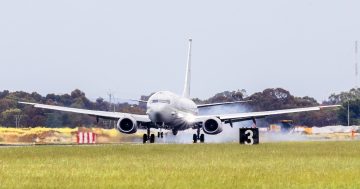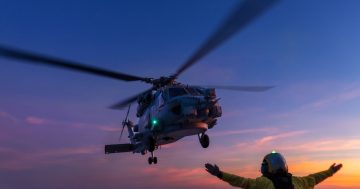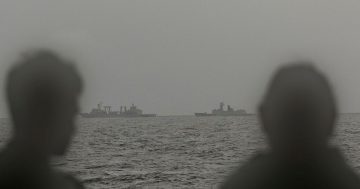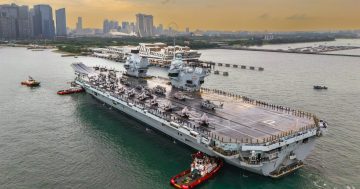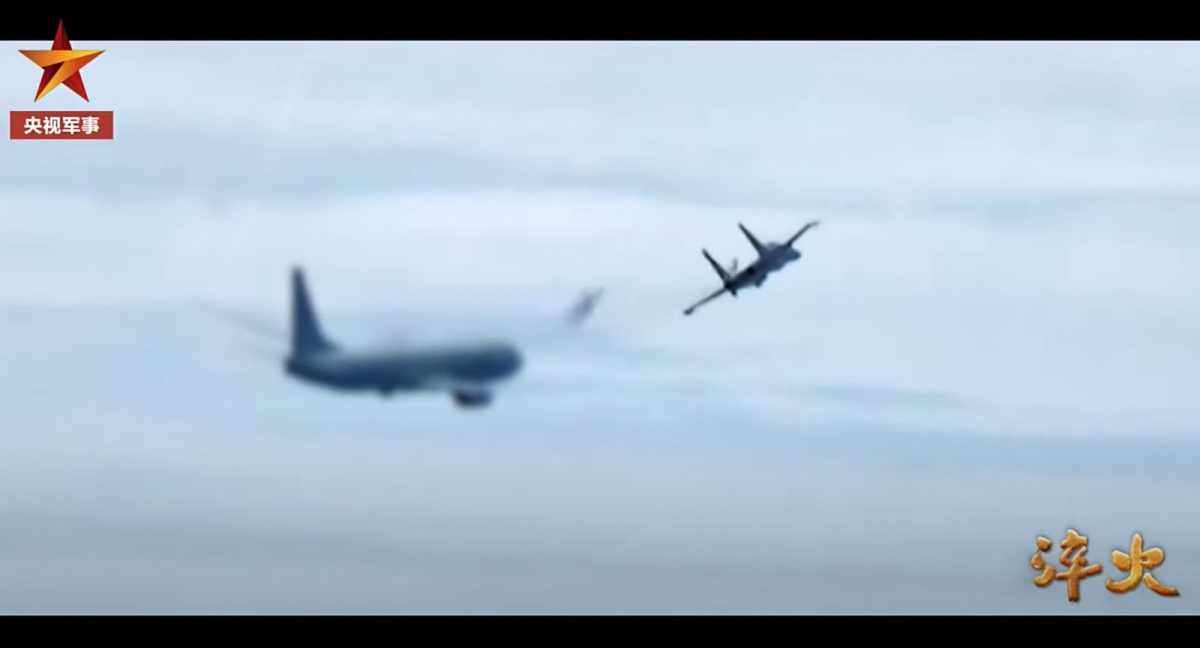
A screenshot of the J-16 crossing the P-8A’s nose and releasing packets of chaff, some of which were reportedly ingested by the P-8A’s engines. Photo: Screenshot.
A 2022 incident that saw a Chinese fighter aircraft intercept a Royal Australian Air Force P-8A Poseidon maritime patrol aircraft in international airspace appears to have been featured in a Peoples Liberation Army Air Force (PLA-AF) propaganda video.
As reported by the ABC on 18 September, the 26 May 2022 incident saw the PLA-AF fighter move close to the P-8A forcing the Australian aircraft to change direction. The J-16 multirole fighter then crossed closely in front of the P-8A and released chaff and flares as it crossed.
On 6 June 2022, Defence released a brief statement describing the Chinese pilot’s actions as “dangerous”.
“On 26 May 2022, a RAAF P-8 maritime surveillance aircraft was intercepted by a Chinese J-16 fighter aircraft during a routine maritime surveillance activity in international airspace in the South China Sea region,” it said.
“The intercept resulted in a dangerous manoeuvre which posed a safety threat to the P-8 aircraft and its crew. The Australian Government has raised its concerns about the incident with the Chinese Government,” the statement added.
“Defence has for decades undertaken maritime surveillance activities in the region and does so in accordance with international law, exercising the right to freedom of navigation and overflight in international waters and airspace.”
Later that same morning, the then new Defence Minister, Richard Marles, described the actions of the J-16 as “very dangerous”.
“What occurred was that the J-16 aircraft flew very close to the side of the P-8 maritime surveillance aircraft,” Marles said.
“In flying close to the side, it released flares. The J-16 then accelerated and cut across the nose of the P-8, settling in front of the P-8 at very close distance,” he added.
“At that moment, it then released a bundle of chaff which contained small pieces of aluminium, some of which were ingested into the engine of the P-8 aircraft.”
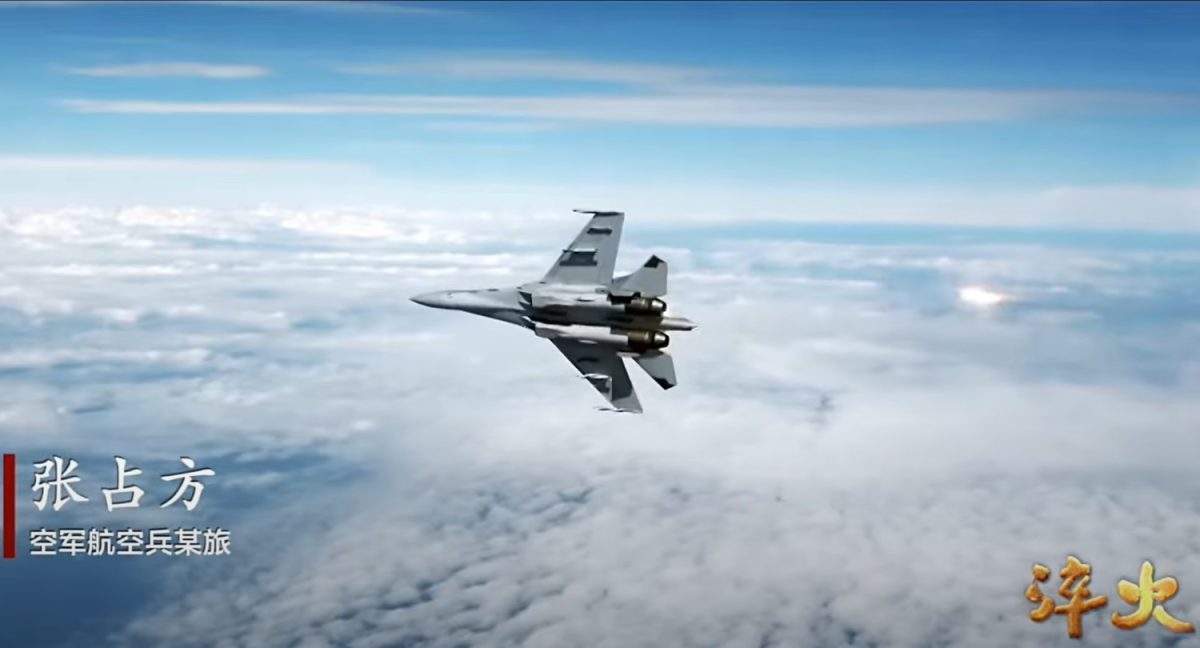
The J-16 is an advanced derivative of the Russian Su-27 Flanker series. Photo: Screenshot.
Later that day, Prime Minister Anthony Albanese told reporters that, “In the Australian Government’s view, in the Defence Department’s view, this was not safe … and we’ve made appropriate representations to the Chinese Government expressing our concern at this.”
China claims almost the entire South China Sea as its own territorial waters, even though the UN Convention on the Law of the Seas (UNCLOS) classifies it as international waters up to the 12-mile limit of the nations surrounding it, including Indonesia, Malaysia, Brunei, Vietnam and Philippines.
Despite the UNCLOS ruling, China continues to harass maritime traffic in the region using its coast guard and loosely disguised ‘fishing boat’ militia, particularly that of the Philippines, and has conducted several unsafe and unprofessional air intercepts of military aircraft transiting the airspace in the region.
China has also built several large airbases, air defence sites and sheltered ports on strategically placed reefs in the region.
The Shenyang J-16 is an evolved and advanced version of the Russian Sukhoi Su-27 multirole fighter. China purchased some Su-27SK Flankers from Russia in the 1990s and subsequently licence-built it as the J-11.
The J-16 evolved from the two-seat J-11BS, is roughly analogous to the Boeing F-15E Strike Eagle and is fitted with an advanced AESA radar and indigenous WS-10 engines.
The video obtained by the ABC shows the footage from the 2022 incident while the Chinese pilot narrates, with a translation of the pilot’s narration – kindly provided by the ABC – being largely consistent with the footage.
“Go to the side of it and lean forward a little bit,” the pilot says as he describes closing in on the P-8A.
“Let it see me directly. I gradually get closer to it, force it away from our territorial line. After I did that, it changed direction.”
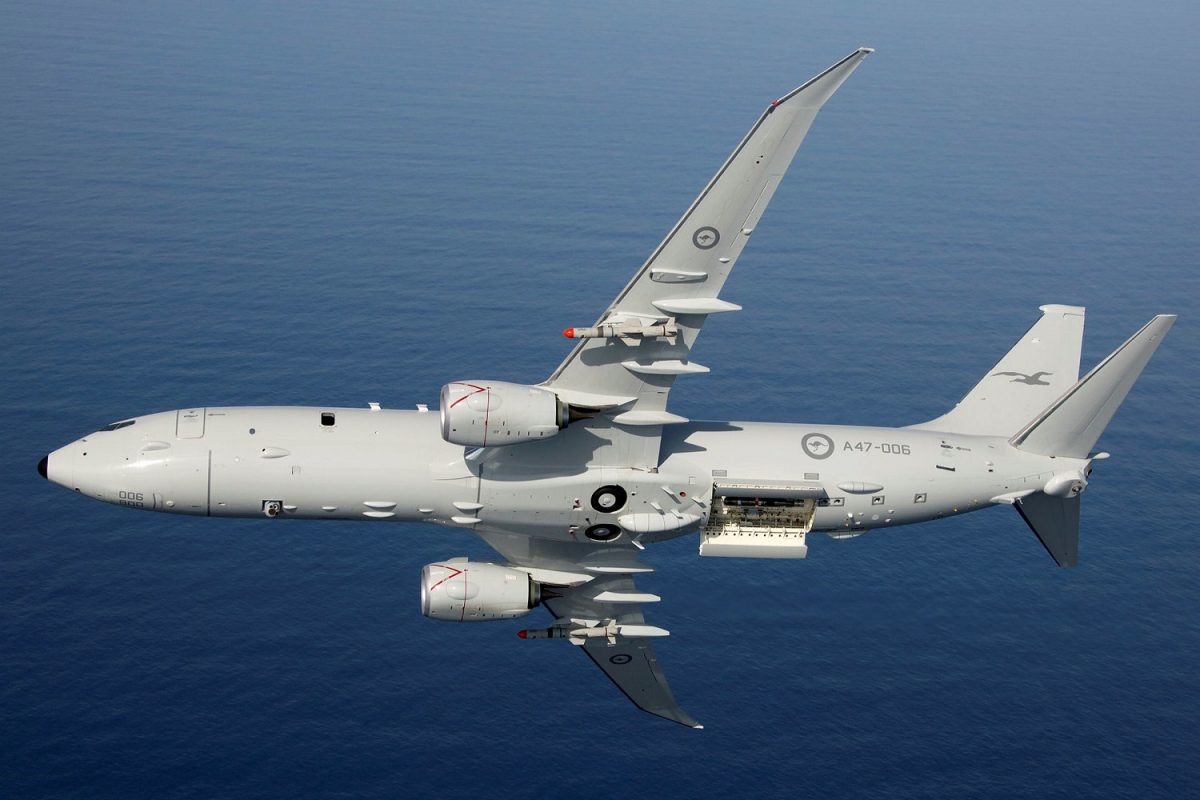
The P-8A is based on the 737 airliner and can be armed with Harpoon anti-ship missiles on its wings and sea mines in its weapons bay. Photo: ADF.
But the P-8A apparently resumed its original course.
“It continues to hover; it’s coming back towards our territorial waters,” the pilot says.
“Facing a strong enemy, a tough opponent, you can’t be afraid. Beat the enemy from the sky above – I have a better understanding of that.
“The braver of the two who meet on the narrow road will win. We must show our swords to the enemy.”
The PLA has had at least three close and unsafe interactions with ADF aircraft and ships in recent years.
In May this year a PLA fighter released flares in front of a Royal Australian Navy MH-60R Romeo Seahawk helicopter operating from HMAS Hobart in international waters in the Yellow Sea. And in November 2023, RAN divers who were in the water clearing a fouled prop of HMAS Toowoomba were hit with sonar pulses from a PLA-Navy destroyer, despite the ship being warned that divers were in the water.


